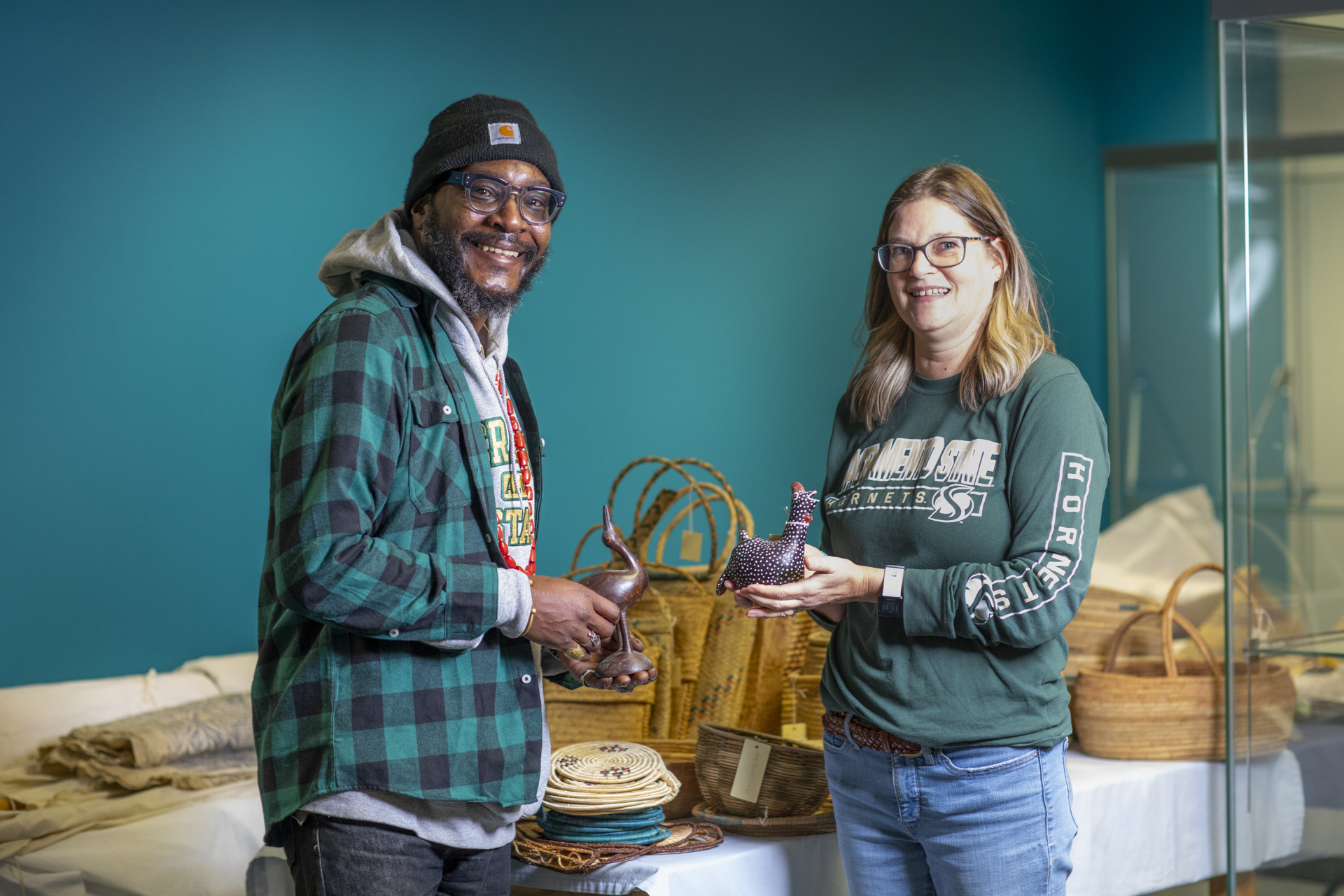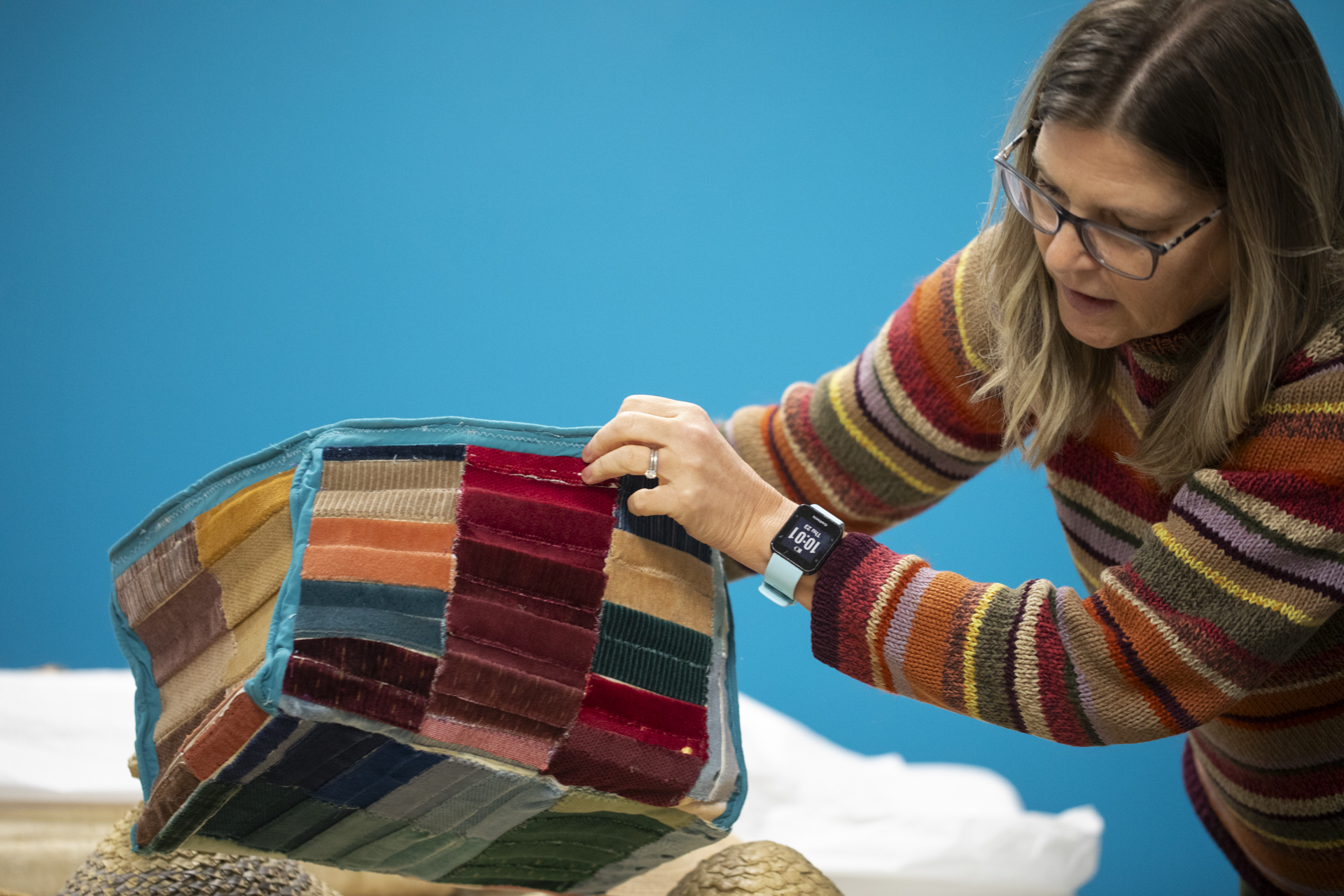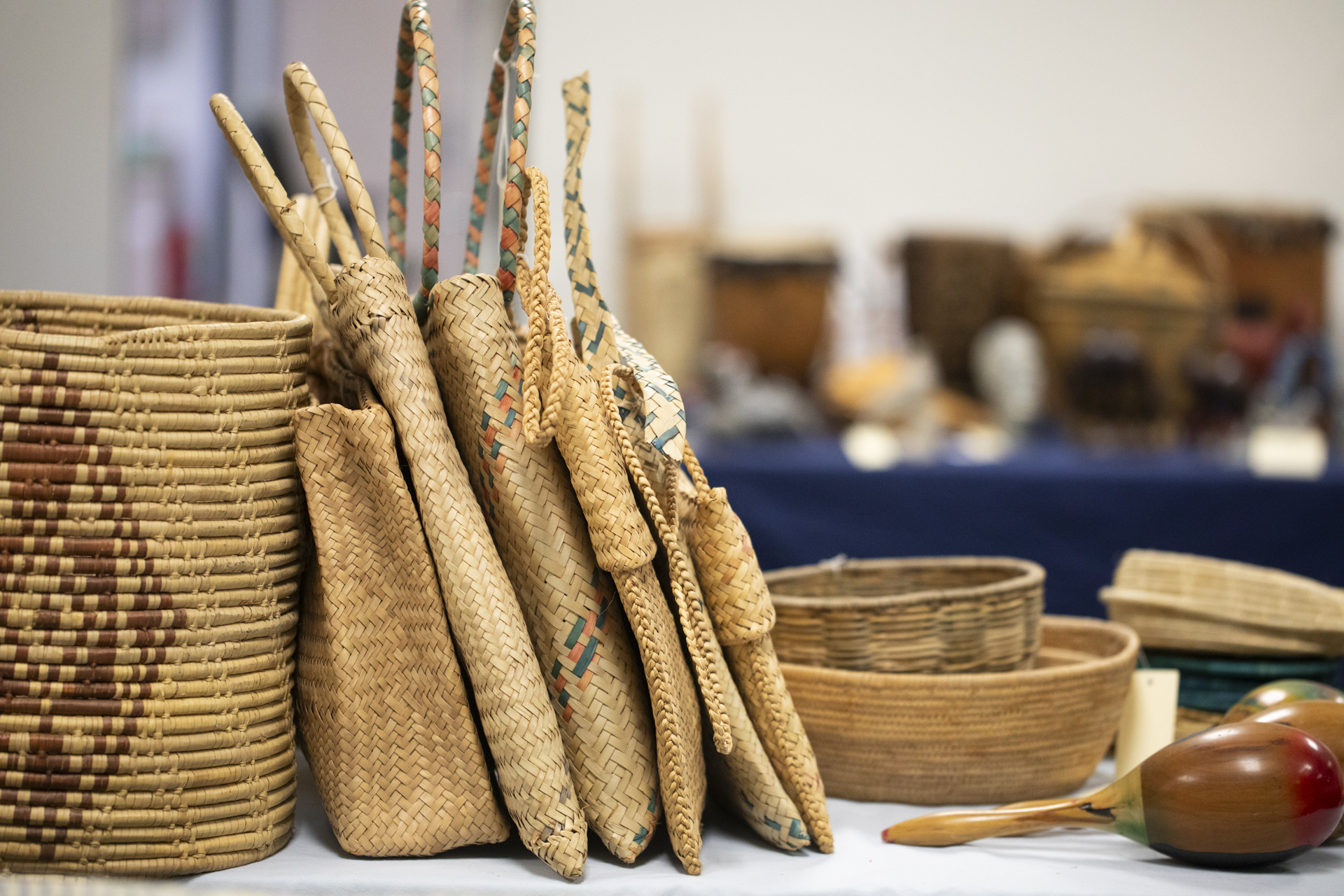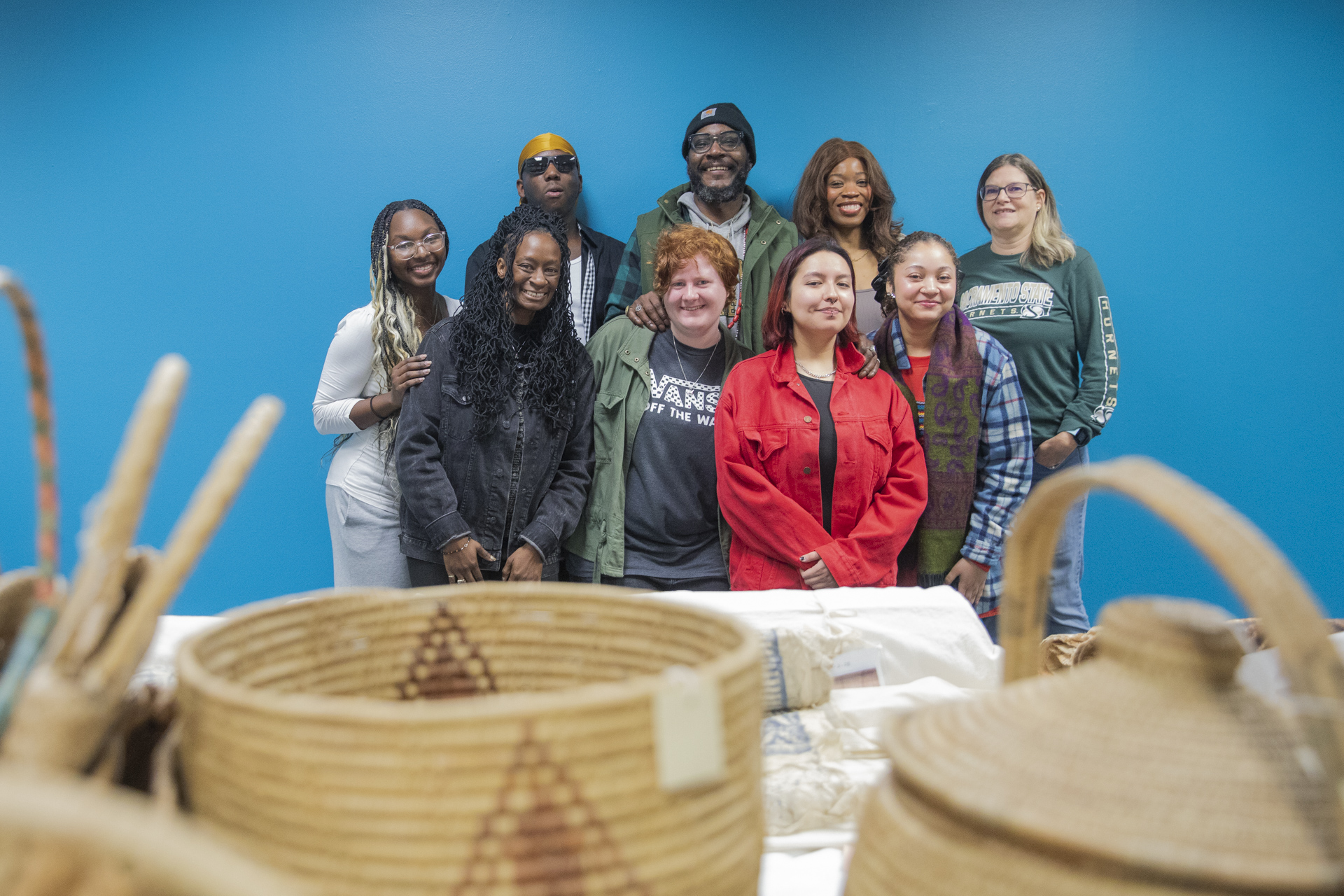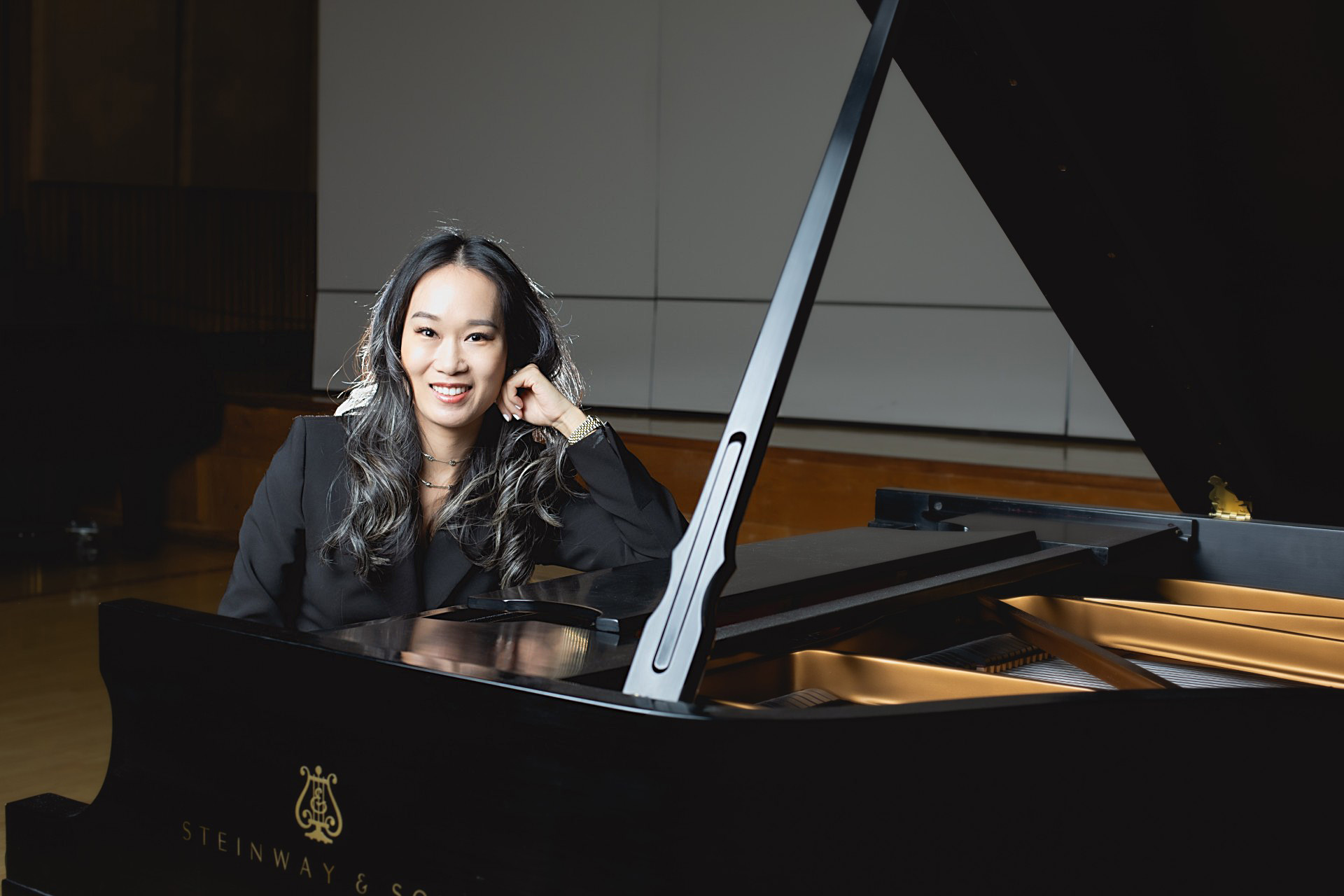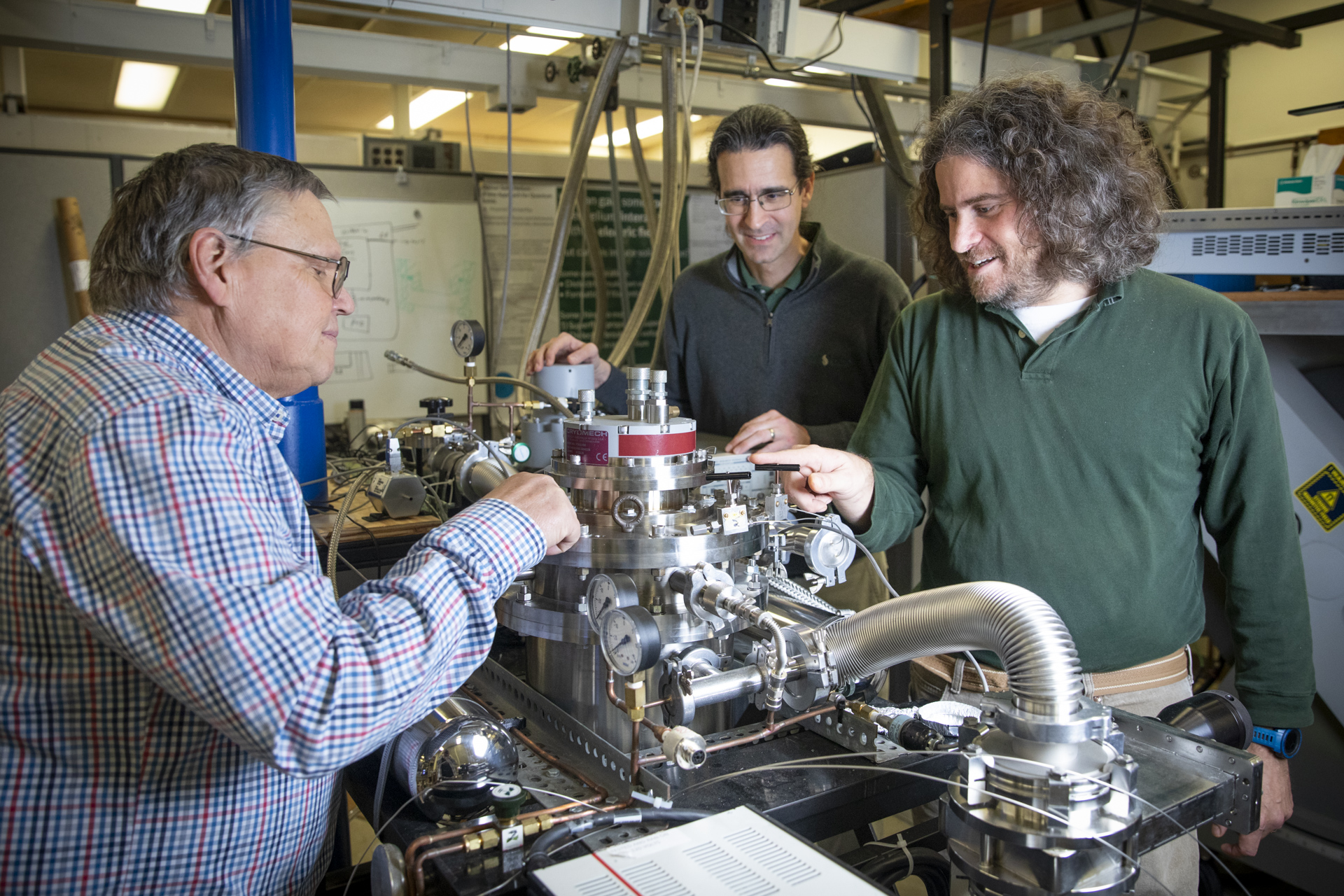Story Content
Student-led research team preserves, documents 600-plus collection of African cultural items
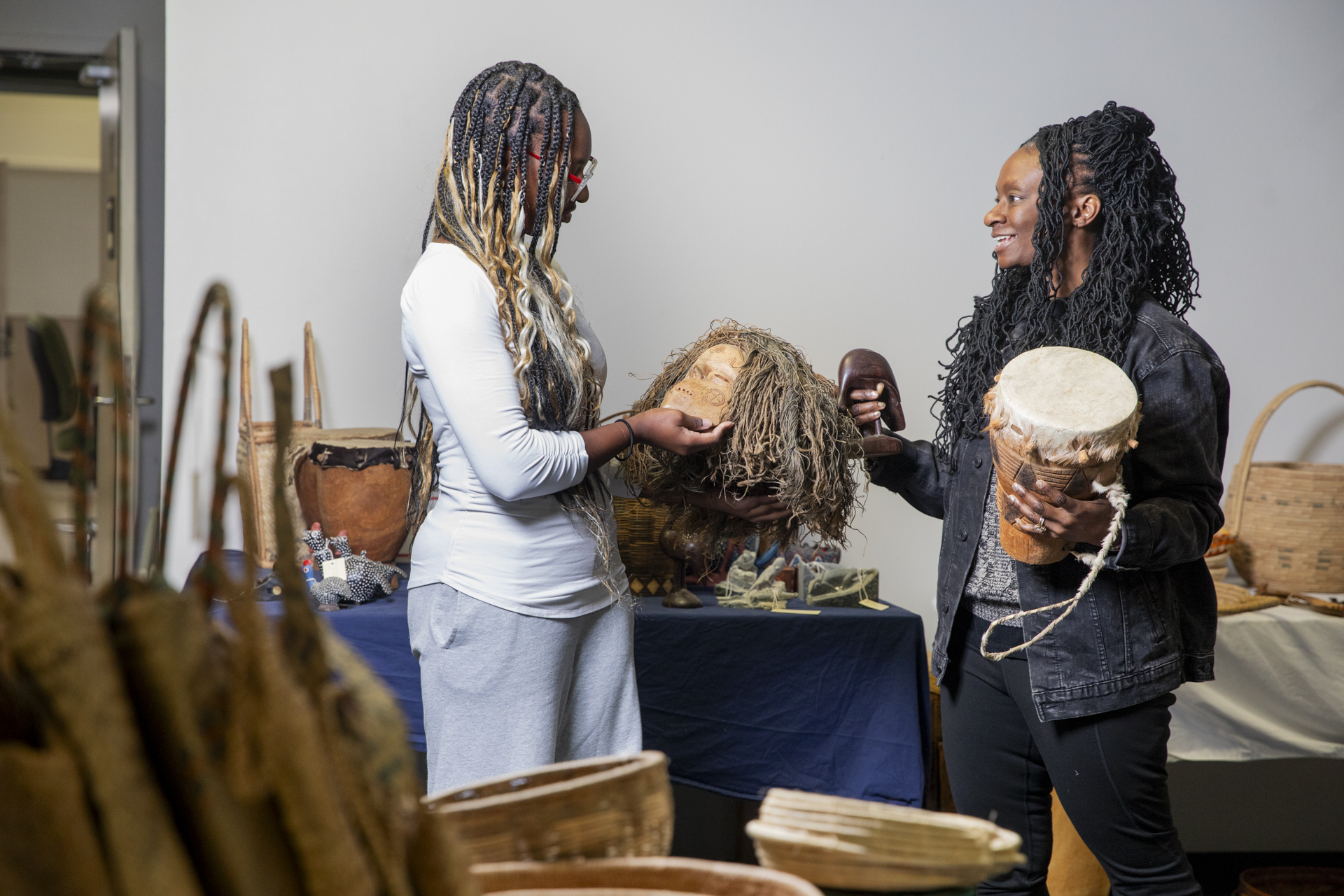
February 07, 2025
More than 600 African art pieces donated to Sacramento State are helping students look into the past and retrieve parts of African culture to share with future generations.
The student-led Sankofa Research Team – named after the Ghanian symbol of a bird stretching its long neck to look backwards and fetch the past – is cataloging, archiving and preserving each piece under the guidance of Ethnic Studies professor Clarence George III and Anthropology Museum Collections Manager Karen Dively.
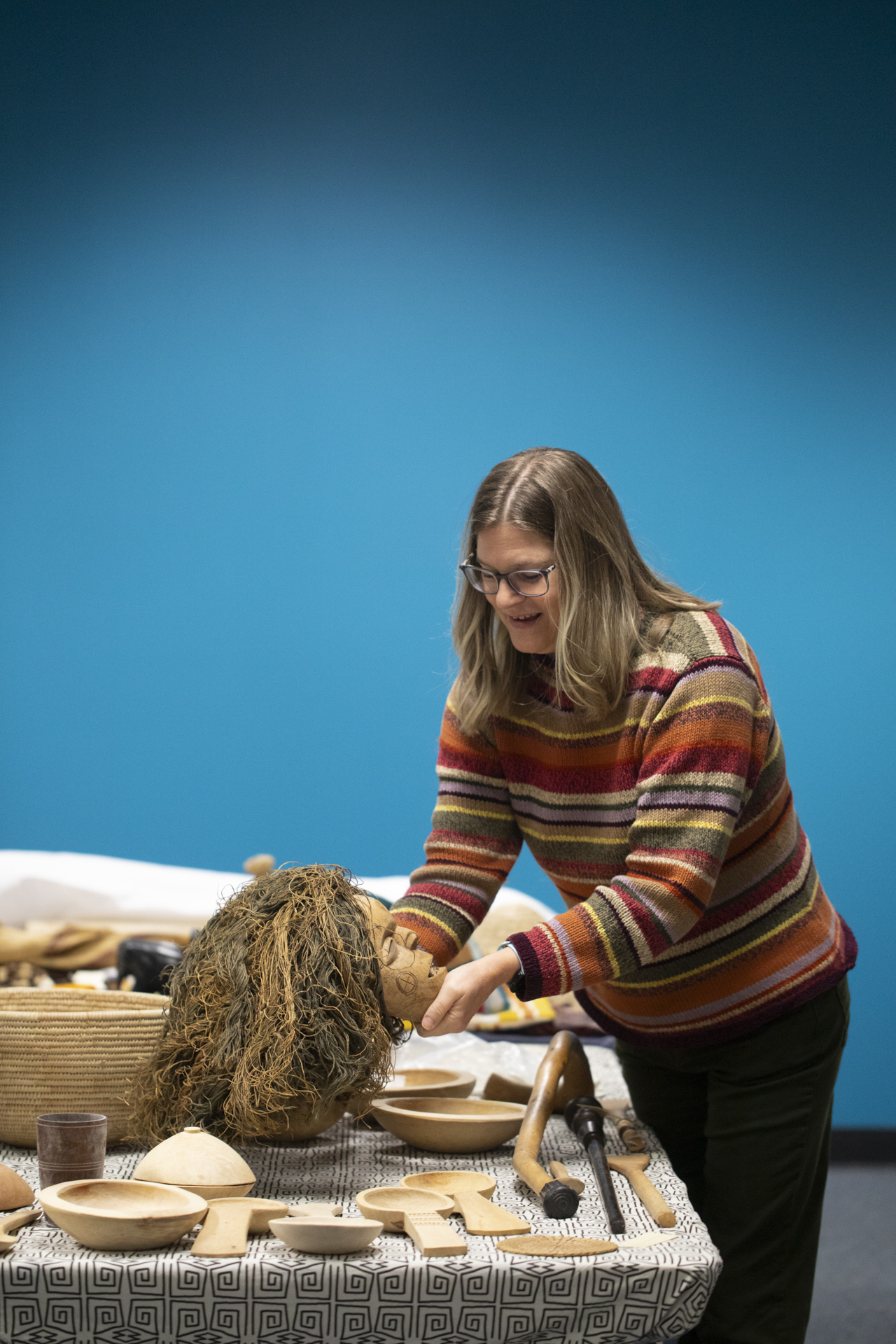
The unique project is not just providing Sac State students hands-on experience researching and cataloging artifacts. It will also serve as a way for the students and the wider community to learn more about African culture and history.
“I’m just over-the-moon proud of what these scholars have done,” George said. “This is a massive project, and none of it gets done without my students and their passion to share these things with the world.”
Plans are underway for an exhibit on campus, and students will eventually make the collection of baskets, drums, walking sticks, wood vessels and utensils available to view online. They even have plans to bring some pieces into local schools.
That early-age exposure is something many of the students involved said they wished they could have had.
“I’ve never been exposed to pieces like these,” Ethnic Studies major Robin Kelly-Dunton said. “Every library or museum I ever went to is mostly European art or European history. So being able to come in here and learn so much about these pieces, how they were acquired and about the people who used them, is fascinating to me.
“It keeps me in touch with the part of my culture I haven’t had access to before.”
Sacramento State’s Ethnic Studies Department acquired the one-of-a-kind collection thanks to a chance encounter three years ago at Safeway.
“I was in my pajamas and I had forgotten my cell phone, but I was just there to grab a few items,” George said.
One of his students was the cashier, who asked him about upcoming classes. Standing nearby was Shirley Finster, whose parents served as missionaries in Zimbabwe and had acquired a significant number of cultural items. Overhearing the conversation, she interrupted to ask if George would be interested in looking at her parents’ collection.
“She and her sister, Connie, were getting up in age, and they really wanted to find a place that would save these pieces and preserve them for others to see, but nobody took on that challenge,” George said. “The gravity of what she was telling me dawned on me, that she had this massive collection of African artifacts and art from her parents’ experience on the continent.”
He scribbled his phone number on her checkbook and asked her to call him in 15 minutes, enough time for him to get home. Exactly 15 minutes later, she called and invited him to see the collection.
“I wanted to give it to anyone who would find value in it,” Shirley Finster, a retired school teacher, said. “Meeting Dr. George was so serendipitous because I didn’t know how to find someone who had passion, and he’s got passion.
“It’s so nice that it will be in town, where I’m living and can go see it”
William and Esther Finster lived in what was then known as Rhodesia from the early 1960s through 1981, before the state gained its independence, raising their daughters while running youth hostels and establishing schools. The couple built looms and taught villagers how to weave doilies and textiles that could be sold to tourists. They also helped people get to health clinics, receiving gifts of thanks in return.
“We’ve been denied so much of our history growing up. I shouldn’t have to wait until I’m in higher education to learn who I am. I don’t want my kids to discover their history until they’re twenty. They should learn when they’re five.” -- J. J. Flores, Ethnic Studies major and Sankofa Research Team member
Over the years, the Finsters amassed a collection of handwoven baskets with handles and lids, walking sticks, drums, platters, spoons and other tools from southern and central Africa.
“They’re very diverse pieces,” George said. “We have to properly identify artifacts for what they are and how they were used correctly and culturally.”
A wooden mask with hand carved facial features and hair made of yarn, believed to belong to a so-called witch doctor, is particularly striking.
“What’s cool is that some of the pieces have postcards or a little note from the person who made it or gave it to them as a thank-you gift,” Dively said.
To form the Sankofa Research Team, George recruited interested students from a variety of academic backgrounds. Under Dively’s instruction, the students are cataloging every item, tagging and assigning each one with a special number. They are also documenting each piece’s details, filling out a form that includes a description, dimensions, any visible damages and even a sketch.
Students are also researching the pieces to find out how they were used. One wooden dowel with carved decorative etchings is still under investigation.
“It’s all student-led,” Dively said. “I’m teaching them how to do the cataloging and find the information we need, but I’m relying on them to do the research. … These are all students Dr. George recruited, so they don’t necessarily have a museum background. There are students who are Business majors, or from the Art department. Several are Ethnic Studies majors. There’s someone from Computer Science.”
Shirley and Connie Finster have visited the research team from time to time, going through the pieces with students.
“I was like, ‘Pick their brains and take notes,’ ” Dively said. “The students have been really excited to see the objects. … They have a lot of enthusiasm.”
Once the documentation is complete, the team will choose pieces for an on-campus exhibit. The rest of the collection will be archived and stored safely.
Eventually, each piece will be photographed so the entire collection can be digitized and put online to give anyone with internet access the ability to view it.
The team plans to bring a few of the sturdier pieces to local schools where children can touch and handle them while learning about African culture. They also hope to create digital learning modules that K-12 teachers anywhere can use to show their students.
Students were drawn to the project by the idea represented in the name Sankofa: reaching into the past to create a better future.
“I have an eight-year-old son, and I'm trying to get him engaged in our culture early on, because I didn't get that,” Kelly-Dunton said. “So I'm exposing him to these things now. This is a wonderful way for me to learn myself and also pass this knowledge down to him.”
Ethnic Studies major J. J. Flores was eager to join the research team and gain hands-on experience on a unique project.
“We’ve been denied so much of our history growing up,” Flores said. “I shouldn’t have to wait until I’m in higher education to learn who I am. I don’t want my kids to discover their history until they’re twenty. They should learn when they’re five.”
Although currently housed in the University’s Anthropology Museum, the collection belongs to Ethnic Studies, a first for the department.
“It’s been an awesome experience to bring these pieces to Sacramento State where we can house them and take care of them and make sure they’re appreciated and displayed for the world,” George said.
Editor's note: This story has been revised to reflect an updated number of items in the collection and timing for the planned exhibit.
Media Resources
Faculty/Staff Resources
Looking for a Faculty Expert?
Contact University Communications
(916) 217-8366
communications@csus.edu
